UP TO THE MINUTE
Live from Polyschool: Empowering Through Education - PODCAST TRANSCRIPT
June 12, 2025 at 11:00 a.m.Editor's note: The following is the transcript of a live interview at the Polyglass Polyschool hands-on training facility. You can read the interview below, listen to the podcast or watch the recording.
Intro: And we are live, we are starting. We are in Winter Haven, Florida. My name is Heidi Ellsworth. This is CoatingsTalk from the CoatingsCoffeeShop and overall The Coffee Shops. In fact, we're also live on YouTube from RoofersCoffeeShop. So you can find us a lot of different ways right this second. But I tell you what, this is our first live-audience CoatingsTalk. Polyglass has sponsored this, they brought The Coffee Shops to Winter Haven, to their Polyschool training, one of two or three, we'll hear about that, training facilities that they have around the country. You're in for a treat today. So remember, this is being recorded and it will be available on demand within the next 24 to 48 hours. Please share it. This is the stuff that makes the industry great. This is real people doing amazing jobs every single day that we want to highlight and we want to share that out.
So, also, the chat is open. Megan's going to be monitoring that chat and you can ask questions through that either on YouTube or on Zoom. If it's a little slow getting back to you, don't worry, we'll follow up and make sure you get it. We also have, like I said, a live audience of women professionals. Yeah. It's so exciting. And they're going to be asking questions too as we go along. So let's get started. And, of course, what we want to do is start with some introductions, because we have amazing guests today. We're going to start down here with Kelsey. Kelsey, welcome to the show.
Kelsey Archer: Thank you.
Heidi Ellsworth: Can you introduce yourself and tell us what you do with Polyglass?
Kelsey Archer: Yeah, absolutely. My name's Kelsey Archer. I've been with Polyglass as a sales rep for about five years. I've been in the roofing industry 15 years. And I cover the Central Florida, East Coast down to the Keys.
Heidi Ellsworth: And you have a background in engineering, right?
Kelsey Archer: I do, yeah. So in a prior life, I was a Building Envelope consultant.
Heidi Ellsworth: That is the... What we're seeing, experience, just knowledge and wisdom we've been experiencing all day. This is just the frosting on the day, let me tell you. And, Allie... Speaking of amazing experience. Allie, can you introduce yourself?
Allie Spangler: Hi, my name is Allie Spangler. I'm district sales manager for Southwest Florida here at Polyglass. I've been with Polyglass about 10 years now. I'm very happy to be here. I'm excited that you guys are here and our live audience.
Heidi Ellsworth: I know. And you've worked on both the manufacturer rep side and now as a full-time employee with Polyglass. So you've really seen the whole nine yards.
Allie Spangler: I have, yeah. I actually started my roofing career with a roofing contractor and then got into manufacturing. It's been a wild ride.
Heidi Ellsworth: I love it. I love it. But no better place to take that ride than in roofing.
Allie Spangler: Absolutely.
Heidi Ellsworth: That's what I say. And, Marie, who's responsible for getting us here, thank you, can you introduce yourself?
Marie Ferrer: Absolutely. My name is Marie Ferrer. I am the national technical training manager for Polyglass. I'm in charge of Polyschool, which where we're here today. I've been in roofing for about three, three and a half years and learning every day something new. So it's never boring.
Heidi Ellsworth: No. No.
Marie Ferrer: That's for sure.
Heidi Ellsworth: It's always fun, roofing. Three years, I tell you, you never leave. It's like Hotel California, right? That's just how it is. And, Henry, can you... So first of all, we have these two amazing gentlemen who are hanging out with all these women. They're probably the luckiest guys in the world as far as I'm concerned. So, Henry, can you introduce yourself, tell us what you do with Polyglass?
Henry Rives: Well, my name is Henry Rives. I'm the national technical manager for membranes. We basically do all the warranties and trainings throughout the country.
Heidi Ellsworth: I love it. And last, but certainly not least, John Luca, can you introduce yourself and tell us what you do?
Gianluca Venturin: Yeah. Hi, everyone. My name is Gianluca. I'm the Southeast Florida tech rep. So I cover the Southeast of Florida. Again, as Henry said, we do demos at the contractor shop, at the ABC branch or any distributor and [inaudible 00:04:07]. We are excited to do this demo today here. We're going to show some new products and some installation details.
Heidi Ellsworth: Yeah. It's so great. So Henry and Gianluca are going to get ready because they are going to be handling our demos today and showing us all the great technology that is coming out of Polyglass for not only you as a live audience, but for you out there in virtual land and our live audience. I have to get used to that. So, gentlemen, we'll have you back in just a few. Okay. So I want to recognize, we're in Florida. It's rather warm. So I want to say thank you to everyone out here for being out in the warm, although you are all used to it, but I think you're also used to the air conditioning from what I've seen. Yes. So thank you very much.
We wanted to start with some questions and we just want to be able find out... And Allie and Kelsey, talk about Polyschool and find out a little bit more. So, actually, I've worked with Polyglass in the past. I'm very proud of that. Having been with so many of the probably OGs of roofing at Polyglass. And Polyschool was something that was always talked about. Everyone wanted it and you really came along. I know it was here before you, but you've really taken it to that next level. Can you tell us about the origins of Polyschool and what it is?
Marie Ferrer: Well, the objective of Polyschool is to share best practices and really train on the Polyglass products, but also share best practices on installation, on thoughts, ideas, new innovative products. So it's to basically educate anyone that comes across any of the products, to be honest.
Heidi Ellsworth: Right. And you bring people here from all over the country, right?
Marie Ferrer: Oh, my gosh, yes. We have people from California, from Arizona, everywhere.
Heidi Ellsworth: Yeah.
Marie Ferrer: We have Winter Haven as our main Polyschool unit, but we have a new one in Waco, Texas.
Heidi Ellsworth: Can't wait to see that one.
Marie Ferrer: Bigger one too. And training is our passion. We want to make sure that everything is translated into you being able to apply what you're doing.
Heidi Ellsworth: Yeah. Today, seeing locations and everywhere that Polyglass is, I'm doing a little passport to click off the places I've been. So I'm working. I'm working on it. I've got Hazleton, Fernley and now Winter Haven. So we're getting there. Ladies, you every day are out in the field working with contractors, working with all of these amazing women in roofing and their businesses. Many women owners are here today. It's just very inspiring. How important is this education and Polyschool to what you do every day?
Allie Spangler: So I think for the sales team, this has become an extension of us. Right? Because the reality is, in many cases, there's multiple reps within a rep group or there's one of us on the road. Having the ability to have customers come here and get a full product offering, get to touch the products, get to learn and get to network with one another, it's invaluable for us.
Heidi Ellsworth: Yeah. And, Kelsey, how about you? How are you using Polyschool with your customers?
Kelsey Archer: Yeah, I agree with everything Allie said. I think it's critical in educating how to use these products. I mean, we're constantly rolling out new products. You have to learn how to install them or they're not going to work properly. So it's critical to the game.
Heidi Ellsworth: Well and I think one of the things we heard today too was a number of the attendees were saying, "How do I know about all these new systems? How do I hear about all these new systems?" And of course I said, "Oh, check The Coffee Shops." But I think this is really one of those things that allows people to see what's happening, what's new, right?
Allie Spangler: Absolutely. Absolutely. There's so many modes of communication now, but ultimately face-to-face is... It's still authentic. That's what we want to do and that's what we do here at Polyschool.
Heidi Ellsworth: Put it together. So, Marie, I think it's brilliant that Polyglass brought you in... Three and a half?
Marie Ferrer: Three and a half years.
Heidi Ellsworth: Three and a half years ago, because your whole career has been around adult education, right?
Marie Ferrer: Yes.
Heidi Ellsworth: So what is the philosophies of Polyschool on how to learn and how has that been a mission of yours?
Marie Ferrer: Okay, that's a good one. So we as adult, we learn by doing a lot hands on. So with the philosophy that we practice in Polyschool, it's a tell-show-do-apply methodology. The trainer will tell you about it, so we'll show you, you're going to see today, but we also want you to participate and do and practice and get feedback. You'll get immediate feedback at that point and then take that learning back to your job site and apply it. So the tell-show-do-apply methodology is what we use. You're never bored.
Heidi Ellsworth: I love it. I love that philosophy of tell and show and apply because I like to get my hands into things and that's the way I understand best. So being able to put that together. How about, you have a lot of ways... And in fact, I'm going to take this over to Allie and Kelsey too. There's a lot of ways for the industry to get education from Polyglass. It's not just here at Polyschool. What are some of the things?
Allie Spangler: Oh, online, we have virtual training sessions that we do. We also have our YouTube channel called POLYflix. Highly recommend. That'll give you a lot of installation tips, how-to videos, time trials. We have Polyschools, we do on-site demos, we do in-office lunch-and-learns and education, whether it be through distribution, consultants, roofing contractors.
Heidi Ellsworth: Yeah. We just got to give a shoutout to marketing because POLYflix is POLY-F-L-I-X. How clever is that? And so you can see all these YouTube because everybody YouTubes, right? Everybody looks at the videos, they're all there for Polyglass. It's so strong. And when we're talking about technical, Kelsey, there's a lot of training out there or just a lot of things that they can get for continuing education on the technical side, right?
Kelsey Archer: For sure. I mean, we just wrapped up the FRSA show in Orlando. They have a ton of classes. Polyglass does them themselves, but I highly encourage getting involved in these industry groups as well to learn about that.
Heidi Ellsworth: I think we've formed a group here today. Everybody's going to be hanging out and talking to each other. Okay, last question before we get onto the demos, because I know everybody wants to get to the demos, but I'm always full of questions. We have a labor shortage and we have a large labor shortage in the roofing industry. A lot of us are wondering how do we get this next generation, how do we retain our good employees? Marie, what are some of the things that continuing education and Polyschool in general does to help with the labor shortage and retention?
Marie Ferrer: Absolutely. Cross-training is a key. It's not just starting in roofing. We also train on waterproofing. We train on all sides of the building. So it's a deal for one person to be that well-rounded and you're able to optimize that person in any way you want. So cross-training is a key.
Heidi Ellsworth: And don't you feel that a big part of... And we talked about this today. You guys all were really so eloquent and how you were saying is that continuing education, being able to be in this forum today with all women and be able to really feel freedom in asking all kinds of questions. I asked some questions on the plant tour and I'm thinking they're going to think I'm a dork, but I didn't care because I felt comfortable and I was really curious. How does that help retention from what you are all seeing in the field with contractors, the empowerment of continuing education?
Allie Spangler: Well, I think, as humans, we always want to continue learning. Right? So this creates a space where while you're continuing to learn your challenge, you're challenging yourself, you're being challenged by others. So that retention comes from every day, it's something new.
Heidi Ellsworth: Yeah. And it keeps people wanting to stay with the company and being appreciated. Because I also heard some of that today that we have some amazing talent here. And with a labor shortage, if you're not appreciating who you have in your office and not treating them correctly, guess what? There's a lot of jobs out there. So I think sending people to continuing education, to Polyschool to do these things, I see a whole group here from one company, I see all kinds of different companies, that is critical to really having people be excited and wanting to stay in roofing, which we need everybody to stay in roofing.
We don't want you to be plumbers or electricians. I mean, that's fine, but stay in roofing. Okay, the fun part. The fun part of this whole thing is getting our hands dirty. So before we bring the demo crew on, first of all, I want to check. Any questions. Okay. Any questions coming online, Megan? Okay. I know everybody just wants to get there. So we are going to move over here and we are going to be the commentary, like the sports casters that you all don't like and Gianluca and Henry are going to come out here and they're going to start their demo. Here we go.
Henry Rives: All right. Hello, everybody. Okay. Well, welcome to the demo we're going to do today. We're going to start off with Modifleece. Modifleece is our newest membrane. In this case, we're going to go use it as a cover sheet. So we're going to adhere it to an existing mod bit. This is just mod bit. It can also be used over existing lightweight and several other substrates, but we're going to show you this one right here on existing mod bit.
Gianluca Venturin: Yeah. I mean, as you can see the roll, again, this is a mod bit, fleeceback. This is the bottom of the membrane. You see this fleece, the rolls cap on a plastic wrap like this roll right here. So they have a little bit of protection to the weather, but you always got to make sure you cover it up with a tarp, you put it on a pallet because you don't want this felt to get wet. If it get wet, you got to wait to dry and I don't know how long it's going to take. So make sure you cover it up and you store it properly on the roof. Now I'm going to show you how the roll looks like. Thank you.
Heidi Ellsworth: So [inaudible 00:14:36] when you look at that, Kelsey and Allie, looking at the fleece on the back [inaudible 00:14:41]. Oh, I'll let Gianluca go ahead.
Gianluca Venturin: Yeah, yeah, absolutely. I mean, again, you see the fleeceback and here, you see a black strip of asphalt. This is self-adhered compound. This is our SEALLap Ultra. That is going to give you a really good bonding with the next sheet. Okay? The top surface, it's a film surface. Probably who is familiar with Elastoflex SA V, it's basically the same. You got lay lines, you got the 3, 4, 12 half a sheet, so it's really easy to cut, it's really easy to align the sheets. You really look for the line and you'll see if you're creaking a little bit. So they are really useful.
Henry Rives: So as with most roofing, you're going to want to stagger your laps. So being that this membrane ended over here, we're going to use a full sheet on the edge. Because you want to stagger your membranes on every roof that you encounter, this is no different. The other thing is the layout. Modifleece being it's a different type of membrane and the SEALLap is on the bottom end of it, our next sheet is going to lay on top of this. We're going to lay it, we're going to line it up right on the three-inch line and you'll see... How we lay it up, we're just going to do the two courses at a time so you can get it and have any questions as we go along. Just go ahead and please ask.
Gianluca Venturin: Yeah, as far as the substrate, of course, you got to make sure the substrate is clean, is dry because we're going to foam adhere over the top, so you want to make sure you are grabbing on a good surface. Okay? If this is a recovery, you got to make sure that you don't have any moisture trapped underneath. So if you have any blister, you got to make sure you cut them open and you patch it and then you go over the top. I'm going to open the next sheet because I want to also show you how to do an endlap.
So we are going to line on the three inches overlap. It doesn't really make sense to overlap more than that because the SEALLap Ultra, the sidelap, it's only three inches. So if you are going to four inches, you are losing basically one inch. So three inches, just make sure you are aligned. Okay? I'm going to open the next sheet. And, of course, we pre-cut these pieces, but when we are using Modifleece, you are not looking to overlap when you have this condition, this endlap, because we have this fleeceback. So what we are going to do is button up the two joints as I'm doing right here and then we use...
For all our accessories on Modifleece, regular, Elastoflex SA V, which you can cut it from the roll, but we also sell Elastoflex SA V flashing strips, 4 inches, 6 inches, 9 inches, 13 inches. For this particular detail, we want to use the nine-inches strips. Okay? Now look at the strip I already cut. I'm going to make sure that these edge is flashed with this edge, the strip I cut. And here, I want to make sure I have always minimum three inches past the edge of the membrane because I want to make sure that this detail on this point is sealed properly. Okay? Now, yes, please. As you can see here, I have these 90-degree corners. I don't like the 90-degree corner, so I'm going to make sure that I'm going to round the corners. Nothing crazy.
Heidi Ellsworth: And why do you do that, Gianluca?
Gianluca Venturin: It's just made the adhesion better. Or if you have a 90-degree corner, it's always possible to lift up that corner or get deformed a little bit, so if you cut that corner, you're never going to have that issue.
Henry Rives: It's easier to kick up a little square corner. It tends to curl up at the edge. It just eliminates it, just makes it a smoother transition throughout the membrane.
Heidi Ellsworth: Nice.
Gianluca Venturin: Okay. Right here, since we are applying the membrane without foam yet, I just scour the release film with the back of my knife. All right? So I know it's right here. So I'm going to scour the release film, because what I'm going to do next is removing the film.
Henry Rives: Which is not always difficult with hands that are gloved. You got it? There you go.
Gianluca Venturin: All right, so make sure it lays down flat. And when you get here, make sure you're not removing those three inches of film. All right? This is what we want. And then as for all our self-adhering membrane, you got to apply pressure, four inches hand roller, that's enough and you make sure you apply even pressure on the entire joint.
Henry Rives: Now you're going to see why he didn't take the release film off, because now we're going to actually open up the membrane to expose the existing mod bit underneath where we're going to apply the adhesive to it.
Gianluca Venturin: So we're going to open it up, only half a sheet this side and half a sheet this side. Always make sure that the roll doesn't move on you. Okay? So now I have this entire area where I can spray the foam and I don't need to care about the side lap. If I'm spraying just a roll, I got to be careful about the overspray. In this situation, also, if I spray a little bit more, I'm going to spray on the felt, which is totally fine. Thank you.
Henry Rives: Anybody want to volunteer? Spray some foam?
Heidi Ellsworth: Yeah, come on. Come on out. Yeah. Come on.
Gianluca Venturin: I'm going to show you-
Henry Rives: He'll start it off.
Gianluca Venturin: Yeah. I'm going to show you, let's say, until here and then you go back and you do the rest. So we are going to apply the foam, not on a ribbon pattern, but on a splatter pattern. So you're going to see I'm going to stay a little bit far away from where I want to spray and you'll see the coverage we are looking at.
Henry Rives: That's what you're looking for, just a spatter pattern. Yeah, so it's as if you were watering your lawn. The tip is made to spread the foam out, the adhesive out, so you're spraying across the sheet trying to get as far underneath those rolls as possible because you're not going to have access to them when you fold them back over. So just make sure you got a nice even coverage throughout the spray area and have a rag ready. Also, the tip, if you stop using the adhesive for, I don't know, 30 seconds to a minute, you're going to want to swap the tip out because it's mixed in the tip, the part A and part B components. So they're mixed in here. So if it's mixed in there and you're spraying it after it had started, it's already cured, you're not going to get out the right ratio from the gun at that point.
Gianluca Venturin: Yep. We're going to spray and if not, that is going to cure. So are you ready?
Jessica: Ready.
Gianluca Venturin: Yeah, put the hose on-
Heidi Ellsworth: And we have Jessica with Weatherguard Roofing. Thank you for volunteering. Nice.
Gianluca Venturin: [inaudible 00:22:59] move a little bit faster. There you go.
Henry Rives: Watch your back.
Heidi Ellsworth: I think she's done it before.
Gianluca Venturin: That's perfect.
Heidi Ellsworth: I think she's done it before. Yeah.
Henry Rives: Good job.
Gianluca Venturin: Good job.
Jessica: Do I [inaudible 00:23:09] end?
Henry Rives: [inaudible 00:23:09] go for it.
Gianluca Venturin: Yep.
Henry Rives: Have no fear.
Heidi Ellsworth: Yeah, nice.
Gianluca Venturin: Thank you.
Henry Rives: So you want to let it sit for a little bit, not too long, not too... You don't want to turn it over too quickly either. But in this heat, you don't have a lot of time. Everything's activating a lot quicker. So we're going to flip this over.
Gianluca Venturin: We're going to start from the center and then let it go. So the gravity is going to do the job for us and you are not going to have any wrinkle. Always tap on the membrane so it doesn't move on you.
Henry Rives: Yes, sir.
Gianluca Venturin: All right.
Heidi Ellsworth: Gentlemen, what about overspray? Are you worried about overspray?
Gianluca Venturin: If you do the butterfly technique, which is what we just did, you're not going to overspray on the... I mean, you can overspray on the felt, but that's not a big issue. Okay? Then you're going to see we are going to apply some pressure. So we're going to spread the foam evenly between the felt and the substrate.
Heidi Ellsworth: Any questions from [inaudible 00:24:22] so far? Yeah.
Speaker 8: I have a question. On the end, I know usually on the overhang, I know usually they have to leave an inch overhang, [inaudible 00:24:33]-
Henry Rives: On the perimeter? Well, you'll have a detail there. You're going to do a drip edge. So you're going to have a strip there, another piece of metal or whatever drip edge you're using and then the cover of it. So this isn't the full detail. This is literally as we're just working in the middle of the field. But if you want those details, we can show you that later.
Heidi Ellsworth: So for the audience out there, the question was usually isn't there an inch overhang and how does that work in the details and what we're finding is this is not exactly [inaudible 00:25:03] but great question.
Gianluca Venturin: All right. So now we are ready to remove the...
Henry Rives: The SEALLap.
Gianluca Venturin: The SEALLap. We'll [inaudible 00:25:11].
Heidi Ellsworth: The factory or the manufacturing plant, this is pretty cool.
Allie Spangler: Yeah, [inaudible 00:25:24]. In roofing, the devil's in the details.
Heidi Ellsworth: Right. Gianluca, when you do the SEALLap along with the spray foam or the adhesive, this isn't going anywhere.
Gianluca Venturin: No, absolutely. The foam takes a little bit to set up, meaning it can take from half an hour to an hour depending on the temperature, but after that, it's not going anywhere.
Heidi Ellsworth: [inaudible 00:26:01] yeah, so cool.
Gianluca Venturin: Okay? Really important detail, don't forget to remove this film. All right? It sounds easy, but sometimes it's not. There you go. And here, again, make sure you apply some pressure. I want to roll it before.
Henry Rives: Oh, ready?
Gianluca Venturin: Yeah.
Heidi Ellsworth: Any questions before we bring up our next [inaudible 00:26:28]? Megan, any questions from out there? Okay, please know the chat is open and ask any questions as we're going along.
Henry Rives: Okay. The adhesive is down, membrane is in place, so we're going to show you how to roll it now. Obviously, it's not a self-adhered product, but we have the adhesive there, so now we want to spread the adhesive to make sure it gets through every single nook and cranny that we have available to us. What we're using here is a 35-pound weighted split face roller. There are 75-pound uses as well or even a push broom, but this, for us, gave us the best results, is what we liked the best. A 35-pound roller. It's the sweet spot.
Gianluca Venturin: Yeah, yeah. It's still acceptable if you want to roll it with a 75, but if we can choose [inaudible 00:27:12] let's say we recommend to use the 35.
Henry Rives: It's our favorite. The motion's basically the same as if I was doing a self-adhered, just the W back and forth across the sheet, across the short side of the sheet, trying to get the membrane and the adhesive to be fully bonded so you don't miss anything.
Heidi Ellsworth: I know you both [inaudible 00:27:42] South Florida and a lot of hurricanes [inaudible 00:27:48] Kelsey?
Kelsey Archer: Yeah. So, I mean, the wind output pressure, the types of pressure that are in our product [inaudible 00:27:55] are outstanding for this product, especially over lightweight concrete decks.
Heidi Ellsworth: Yeah. You were talking about the lightweight concrete decks.
Kelsey Archer: Yes.
Heidi Ellsworth: That was really impressive.
Kelsey Archer: Yeah. I mean, I think this is a game-changer in the lightweight circle. Yeah, absolutely.
Henry Rives: Anybody else want to spray?
Heidi Ellsworth: Come on.
Henry Rives: Don't be shy. Come on up.
Heidi Ellsworth: Okay, we're bringing some [inaudible 00:28:16] and Heather is coming up. Megan, what's our question? We have this [inaudible 00:28:21]. Okay, hold on. Hello. Okay, here we are.
Henry Rives: Have you sprayed adhesive before?
Heather: Nope, it's been a while.
Henry Rives: Okay. So basically just there's the trigger, pull back and just go-
Heidi Ellsworth: Hold on, we're going to answer your question. Just one second. Unless, Allie, can you answer?
Allie Spangler: I'll give this one to Henry.
Heidi Ellsworth: Okay. We're going to... Oh, to Henry? Okay.
Gianluca Venturin: Yeah, we're going to be here, but...
Heidi Ellsworth: Henry, we have a quick question for you.
Henry Rives: Yes.
Heidi Ellsworth: When spraying the foam, do you have to worry about the spray foam aerosols traveling in the air and perhaps coating a vehicle close by?
Henry Rives: Absolutely. You always consider the wind. It's absolutely a valid question. So, yeah, you want to check that, want to make sure that you're not doing it in high winds or it'll get away from you a little bit. You can overspray on awning or part of the building so you don't want that. But, yeah. So if it's on high winds, yeah, definitely be careful.
Heidi Ellsworth: So be cautious and-
Henry Rives: Be cautious of it.
Heidi Ellsworth: ... be understanding of that and what's [inaudible 00:29:17]. Heather, great job. You're a pro. There we go. Okay.
Heather: Yes, but same technique.
Henry Rives: That was quick.
Heidi Ellsworth: Now, perfect. Keep those questions coming. That was a great question on the overspray. So, ladies, anybody else want to get up here and get out here and help? I think they're going to have more coming your way. Yeah, come on. You need some gloves? So, Gianluca, we have our next person. Can they help with the rolling?
Gianluca Venturin: Yep.
Heidi Ellsworth: Okay.
Henry Rives: Roller's over there.
Heidi Ellsworth: Okay. And, Tara, right?
Tara: Tara, yeah.
Heidi Ellsworth: Tara, which company are you with?
Tara: All-Type Roofing Services.
Heidi Ellsworth: All-Type Roofing Services. We heard about your family business this morning.
Tara: Yes.
Heidi Ellsworth: Very cool. Okay, let's see it.
Henry Rives: Watch your step. He's going to roll out there and he's... I don't know if you want to try that too?
Tara: I will. [inaudible 00:30:24].
Henry Rives: We got free labor here. Let's go for it.
Heidi Ellsworth: I think we just want to show that this is just not a man's world on the roof anymore, is it? This is something that anybody and everybody can be doing and we want to be bringing them into the industry. I know. Tara, how is it?
Gianluca Venturin: Do you have a question?
Speaker 11: Yes. Are you going to put another butterfly strap or [inaudible 00:30:53]?
Gianluca Venturin: No. Here, we're good. As far as the T-joint, we are fine.
Henry Rives: I got you. I got you.
Gianluca Venturin: This is sealed right here and this is covered up by the next course, meaning this sheet. So the endlap is done. Okay? You just remove the film, make sure you pass the roller. I would recommend to pass the roller on the T-joint so you make sure everything is tight. Okay?
Heidi Ellsworth: You want to pull the tape? Yeah.
Gianluca Venturin: Yeah, you can do the butterfly.
Henry Rives: On this side? Yeah, [inaudible 00:31:30] hold it to the top of the half. There you go. And then this one, we're going to have to bring it back till the top meets the bottom. Oh, it's stuck. That's why it's not going any further. It's already adhered.
Gianluca Venturin: All right, are you ready to spray?
Henry Rives: Tara got more than she bargained for.
Gianluca Venturin: Let me change the tip.
Henry Rives: Again, it didn't spray for a little while so to make sure you get a good ratio of A to B, he's going to swap out the tip again because of the mixed cartridge. This way, you know have a good amount and good cartridge flow through the hose.
Tara: How many tips come with the box?
Henry Rives: I believe it's 10 in a bag that comes in the box. It comes with a little tool, a little wrench to tighten the hose to the cylinders and a lubricant for the orifices on the edge of the gun.
Gianluca Venturin: All right, so the-
Speaker 12: I have a question.
Henry Rives: Yes.
Speaker 12: How often do you have to change the tips?
Henry Rives: It depends on how much you're spraying. If you're constantly spraying, you don't have to change it. If you do stop for, in this weather, about 30 seconds to a minute, you're going to want to swap it.
Heidi Ellsworth: So the question was how often do you have to switch out the tips.
Henry Rives: How often do you have to switch it out. Yeah.
Tara: Can I go?
Henry Rives: Go for it.
Heidi Ellsworth: Okay.
Henry Rives: Watch your shoes.
Heidi Ellsworth: Okay. I think you'd have to put this in the category of so satisfying, right?
Gianluca Venturin: Perfect.
Henry Rives: That's it.
Gianluca Venturin: Thank you.
Henry Rives: Good job.
Heidi Ellsworth: Nice.
Henry Rives: So we'll just let it sit for a sec before we actually throw the membrane back onto it.
Heidi Ellsworth: Nice job.
Henry Rives: Again, remember the spatter pattern. It's a little tricky to get started. I think the nozzle was on a little weird because you do see a little bit of a ribbon pattern here you really shouldn't be seeing. It should be just more like an even spatter pattern throughout edge to edge and just like you're watering your lawn just back and forth.
Gianluca Venturin: And once again, we're going to apply some pressure so we're going to spread the foam. We went a little bit heavy here.
Heidi Ellsworth: Okay, great.
Speaker 13: Will those go down?
Henry Rives: It probably not.
Gianluca Venturin: No.
Henry Rives: Yeah, because if it's-
Speaker 13: You got to be careful how you're spraying.
Henry Rives: Yeah, it may not go down. So if you do see a lump there, it could telegraph through on your cap sheet. So you want to be aware of what you're spraying when you're spraying and make sure it's nice and even as low as possible, the droplets are even and dispersed throughout the sheet. Somebody else had a question?
Heidi Ellsworth: Yeah, we have one over here from virtual land. It is, "What is the minimum and maximum pitch the product can be used?"
Henry Rives: Okay. Well, minimum pitch, you want a positive drainage on any roof. So anything from a quarter-inch, 12 to even an eighth, but you want positive drainage is the important factor in that question. As far as the maximum pitch, what are we looking at? Two? 2 and 12?
Kelsey Archer: Well, if you need a class A, it's two.
Henry Rives: Yeah. If you need a class A, it's two. A UL class A fire rating.
Kelsey Archer: And if you don't need a class A, whatever you feel comfortable with.
Henry Rives: Yeah, at that point, whatever. Yeah, you just make sure you have to back nail it if you are using fasteners that are on a steep slope and just be aware of that.
Heidi Ellsworth: Okay. And we had a question down here, I just want to make sure we caught that for the audience. You had a question about the bumps?
Henry Rives: Oh, the extra foam showing on the bump there. That's what I was saying. Just be sure that when you're spraying the adhesive, it's spread out as even as possible and not creating lumps because they could telegraph through the membrane, you probably see it on your cap sheet.
Heidi Ellsworth: Okay.
Allie Spangler: Hey, Heidi, I just wanted to interject. This is Allie. One of the things minimum or maximum slope. It's a great question, but really this product was designed for low-slope applications. So if we get into steep slope land, we've gone too far.
Henry Rives: Unchartered territory.
Allie Spangler: Yes, we have a lot of other products to meet your needs there.
Heidi Ellsworth: Yeah, that's a good point. Yeah. This is for low-slope commercial applications and we also wanted to know... And this is from Ryan Kearney, "Is that the largest appropriate roller?" So if you use different size rollers-
Henry Rives: You can use a 75-pound roller if that's what you have, that's fine. The 35-pound roller is what we're using here. We like that. It tends to disperse the adhesive a little better for us. Individually, we did our own testing aside from the engineering and we saw that those results were better. You could, in a desperate situation, even use a push broom, but you're going to have to push down on it, make sure you get enough pressure where you're dispersing the adhesive enough.
Heidi Ellsworth: Excellent. Excellent. And-
Henry Rives: She had a question.
Heidi Ellsworth: Yes.
Speaker 14: In this case, [inaudible 00:36:55] clean the deck needs to be? I know-
Henry Rives: Good roofing practices require a nice clean surface. So the question was how clean does this surface need to be. And, yes, in any good roofing practices is make sure that your substrate that you're sticking your finished roofing to is completely clean, dry, free of dust, dirt, debris. If say you have to go off the job site for, I don't know, a month, a week or whatever, if we had every penetration sealed, if we had your wall flashings installed and sealed, it could be watertight. It would be considered watertight. But the top surface is not UV stable so you'd have to come back, clean it all off, prime it and then you're ready to go again.
Gianluca Venturin: All the wall flashing patches over the top of Modifleece are going to be done with Elastoflex SA V. Okay? So self-adhere [inaudible 00:37:49].
Henry Rives: Yeah.
Gianluca Venturin: As far as wall flashing, always keep in mind you always want to prime that wall. We have PG 100-
Henry Rives: Vertical. Vertical walls, always prime them.
Gianluca Venturin: ... or WB-3000, those are the two option we have or also Polytack for contractors that are working up north. So on top of Modifleece, what can we do? We have generally two options. We got to install a cap sheet, but we can decide if we want to go with a self-adhered cap sheet or a torch cap sheet. We didn't know which one to show you, so we're going to do both. All right? We are going to start with self-adhered.
Heidi Ellsworth: I love this too. And to the audience out there, I do want to note, this is a CoatingsTalk, so you may be wondering, "Where are the roof coatings?" But we wanted to show the spray adhesive, we want to show you alternatives also that these are great alternatives, but there is a whole plant out here at Polyglass making coatings and they're also down in Texas. So just if you're wondering that inside your head, there we go. We also may have a couple questions that are coming through that we're going to get back to you on. So you should be getting some texts and some comments back in writing and we will be following up on those, just so you know. Okay, gentlemen, what are we doing now?
Gianluca Venturin: Yeah, we open just a little piece and another piece is coming of Polyfresko SA G. Again, bottom, self-adhered compound. Over the top, we have [inaudible 00:39:23] granules, but as you can see, we have a bright white CURE Technology on top that is going to give you that reflectivity.
Henry Rives: Like a coating.
Gianluca Venturin: Really important with self-adhered is, for sure, make sure the substrate is clean, once again. So if you have anything or you have an area where you're not sure you have some dust, prime it. If you're not sure that you got some dust on it, then you see that the color is not good, then you're not going to have a good bonding. You can prime it with a PG 100. Okay? For-
Heidi Ellsworth: Gianluca?
Gianluca Venturin: Yeah.
Heidi Ellsworth: As we're talking about that too, honestly, with this roof or if you find these roofs out there, this is where the coatings can also come in on maintenance, repair and possible restoration, correct?
Gianluca Venturin: Absolutely. Yes. Yes. So that's another really important point, maintenance on the roof, it's required for any warranty, but it's really, really strongly recommended because it's going to save your roof. Talking about self-adhered cap sheet, here, once again, we have an endlap, which is always a tricky detail. We want to make sure that you guys know how to do it. And on each endlap, we want to make sure we cut three 45-degree corner. One is this one, one is this one right here and on the next sheet is going to be this one right here. Three corners. Okay? The only one I'm not cutting is the one that we're going to leave exposed. This can stay. Okay? Cutting those three 45-degree corners is going to make the water... It's going to be harder for the water to find a way to enter on those spots. Okay?
Henry Rives: So, basically, the other thing would be if this was at a 90-degree angle over the edge, you have a little bit of a bridge there. That's a tiny little pinhole where water could back up into there. So we just get rid of that bridge by cutting this angle off. It took him what? Two seconds to do that. And it's peace of mind, you know it's solidly bonded to this edge right here, this corner here and on the third course coming up across the top. All right.
Gianluca Venturin: Okay. For-
Henry Rives: So with the FASTLap, he did mention the FASTLap. I don't know if you guys could actually see it because it's coated. This is a granule-free area. It's pre-made that way so you can bond right to it without having to embed your granules or adding any adhesive to it. It's covered in... There it is. Now you can see it probably better than you could before. I was like, "Yeah... We're used to seeing it. I don't think everybody is familiar with the product, so I just want to point that out. It's there in place and, like I said, once we take this release film off and we bond to there, we're solid.
Gianluca Venturin: Okay. For [inaudible 00:42:52] not familiar with our self-adhered membrane, the bottom of the membrane has two release films. Okay? That's to make it easier to remove those films. So every time I'm going to try to remove those film, I'm going to pull [inaudible 00:43:07] make sure that everything lays down flat. Then on a 45 degree, you're going to [inaudible 00:43:15] the film, staying always down so you don't trap any air in between the cap sheet and the base sheet in this case. Okay? Same on the other side. Okay? I can always apply some pressure, especially here at the edge.
Heidi Ellsworth: Any questions, ladies? Not yet? Okay. We've been having great questions, just to say. It's an awesome-
Speaker 15: Do you want to overlap at three or how-
Gianluca Venturin: Oh, here, the endlap? In this case, we have the FASTLap. Okay? Which is going to be-
Speaker 15: [inaudible 00:44:05]?
Gianluca Venturin: Yeah, it's going to be normally five or six inches. If you don't have the FASTLap, six inches is required all the time. Okay?
Henry Rives: [inaudible 00:44:13] the FASTLap's already pre-made for you, it measures about five inches, just bring the edge of this overlapping membrane right to the edge of that. You don't want any exposed salvage edge, you don't want any exposed un-UV-supported membranes. But you don't also want to get on top of the granules either. So it's a fine line. You want to just get it almost perfect.
Heidi Ellsworth: And FASTLap, wasn't that a technology created by Polyglass?
Henry Rives: Yeah, it's a feature that we have on our premium membranes.
Heidi Ellsworth: Yes.
Henry Rives: And it saves a lot of time, it saves a lot of manpower or errors that sometimes you're embedding the granules, you end up actually scraping the membrane off and making it thinner in those areas, which is nobody... You're paying for a full roof, get a full roof, just embed the granules, put them in. In this case, they're ready to go for you.
Heidi Ellsworth: That's excellent.
Gianluca Venturin: Okay, I'm ready to remove the film.
Henry Rives: Anybody want to try?
Gianluca Venturin: Yeah.
Heidi Ellsworth: Want to try? Somebody?
Henry Rives: Take some release film off?
Heidi Ellsworth: Anybody? Come on out. Okay, there we go. [inaudible 00:45:17], yes.
Henry Rives: All right.
Gianluca Venturin: All right, so you're going to stand on the membrane so you make sure it doesn't move. Remove three, four feet and then you can grab the film and pull it from [inaudible 00:45:29] down. There you go. Make sure you got some film. There you go. Okay. Lay down, then step back.
Henry Rives: Careful where you step. If you want to step off of it, I'll take the rest because you're stepping on it, you won't get it out. All right, perfect. Good job.
Heidi Ellsworth: Yeah. Pretty easy? Yeah?
Speaker 16: All day long in the hot sun, I don't know about-
Heidi Ellsworth: No. You're right. That's not easy.
Henry Rives: This is another method... I'm sorry.
Heidi Ellsworth: No, go ahead.
Henry Rives: This is another method of taking off the release film. You can simply just flop it over. It's really helpful when you're on a perimeter of a building, you're 60 stories high, you don't want to actually work on that side. You can take the membrane away from you, release the film and then slap it back in place. So say it's a flop.
Heidi Ellsworth: Henry, with the heat, especially the heat in Arizona, Florida, everything, are there any special precautions you need to do with this product compared to if you're in the north with cooler temperatures?
Henry Rives: Well, heat's going to help it adhere faster and more. The thing, the release film, right now, it's sitting right now. If I had not taken off the release film, the hotter it gets, it may actually activate and be a little more difficult to remove.
Heidi Ellsworth: Oh, okay.
Henry Rives: So if that does happen, turn it over, roll it up, put it in the shade for 15 minutes and then it should be ready to go again.
Heidi Ellsworth: Interesting.
Gianluca Venturin: All right. If you have a full roll, it's maybe better if you do it with three guys-
Henry Rives: People.
Gianluca Venturin: ... one in the center because we always going to go with the center first, then let it go. So it lays down flat, no wrinkles, no anything. All right?
Heidi Ellsworth: A thing of beauty, man. That looks great.
Gianluca Venturin: Yep.
Allie Spangler: Hey, we just got a question from Ryan Kearney. "What is the reflectivity rating of this particular cap sheet?" This is our Polyfresko line and this has an SRI of 96, so it is an extremely high reflectivity rating for a modified cap sheet.
Gianluca Venturin: When you roll the membrane-
Heidi Ellsworth: Gianluca, hold on one second. Did we get the answer... Okay, go ahead. Sorry.
Gianluca Venturin: Sorry. When you roll the membrane, we always recommend to roll the membrane in this way. So in case you have any little air pockets right here, it's way easier to push the air in this way rather than for the entire length of the roll. So always roll in this way. Normally, you want to start from the center of the roof and you work your way out.
Allie Spangler: I think I'm going to sleep all day tomorrow.
Gianluca Venturin: Now with Polyfresko, we have this high reflectivity. We always want to make sure you have that positive drainage. I would recommend quarter of an inch will be the great because if not, you're going to lose that reflectivity, right? Because you're going to accumulate some dust. It's not going to be good.
Henry Rives: This membrane's white, you've seen other white half sheets on the surface, the standard white of the industry, it's going to reach... What? Well, 140, 130 degrees, even more, depending on the heat and how much sun is hitting it. This maxes out at about 113 degrees. So you can literally touch it and [inaudible 00:49:10] you're going to feel some heat. So the reflectivity is what keeps it cool. So let's say you want to put it in... I don't know, a covered Florida room in the back. It could theoretically lower the temperature inside that structure.
Gianluca Venturin: All right. Now we are going to show you, as I said also, a little bit of torch. Get ready to torch because we are going to ask you guys to torch. So this is our Polyflex G. This is-
Henry Rives: It looks gray here, but this is technically white. That's the difference between your standard white in the industry and the Polyfresko.
Gianluca Venturin: And when we're done with the demo, you guys can come here and feel free to touch the membrane. Of course, this is going to be torched, so we got to wait about an hour, an hour and a half to cool down, but this is going to be way cooler than this one. Okay? Once again, also on the torch membranes, we have this endlap which is called FASTLap without granules. Again, as Henry said, it also makes the adhesion better because you don't have much granules. You have asphalt with asphalt [inaudible 00:50:29].
Henry Rives: Can you see?
Heidi Ellsworth: Yes.
Henry Rives: I'm going to grab the [inaudible 00:50:34].
Heidi Ellsworth: Okay, so we're going to get some folks here who wants to torch down on this cool day. There we go. We got a lot of people who want to wield some flame. Okay. Allie and Kelsey, as you're looking at this and we're getting ready to start torching down, how much torch is actually happening? Still a lot in the US, isn't it?
Kelsey Archer: Oh, a ton here here in Florida. A ton in South Florida.
Allie Spangler: It is. It's still a tried and true technology that people are comfortable with. However, the longer our self-adhered has been in the market, I think we're winning those guys over. The reality is, from a safety standpoint, you can torch safely and we want you to torch safely, but self-adhered really removes that open flame.
Heidi Ellsworth: With everything. Torching has been around for centuries.
Allie Spangler: Yes.
Heidi Ellsworth: Right? And so it is something that's going to change as we go along, but I think everybody needs to be aware of it even with the times that the technology's starting to change.
Allie Spangler: Absolutely. And Polyglass, we make an incredible torch, so we want to be able to offer all of our products regardless of what you prefer.
Heidi Ellsworth: And put them through.
Allie Spangler: Yeah.
Heidi Ellsworth: Don't forget, if you have questions, if you have anything, keep asking them. They're coming in through, Megan's reading it out for us and we're also taking questions from the audience here as we go along. While they're getting ready there, I wanted to talk a little bit about the difference between the bright white and the white, which does look gray to me, I have to say. That's a huge difference.
Kelsey Archer: It's a huge difference. Yeah. So we actually have three white cap sheets now. The Polyfresko has been around for a while and that's, by far, our brightest cap sheet. Like Allie had mentioned earlier, it gets an SRI of 96. Whereas the white... And this is the industry white, it really is gray, but in the industry, that is considered the white, that's going to have an SRI of 25 or 30. And then we have one in the middle now, which is our bright white, it's not our Polyfresko and that's going to have an SRI of 86.
Heidi Ellsworth: SRI, Solar Reflectance Index?
Kelsey Archer: Yes.
Heidi Ellsworth: Is that right? There you go. Just in case you were wondering. Okay, gentlemen, are we ready?
Gianluca Venturin: When it comes to torching, there are multiple ways. You go in the field and every guy is torching a little bit different or really different, that depends. Okay? So I'm going to torch a little bit and then you guys tell me what you think. If I'm doing good, if I'm doing wrong, you guys are going to tell me.
Henry Rives: [inaudible 00:53:29] Beautiful. Right?
Heidi Ellsworth: Beautiful.
Henry Rives: Beautiful, right? You got bleed out, it... No? No? Oh, we got thumbs down, man.
Gianluca Venturin: That's good. I always did it like that.
Henry Rives: 30 years.
Heidi Ellsworth: We're hearing no.
Henry Rives: Since he was three.
Gianluca Venturin: Okay. No, no. This is the wrong way to do it because you're going to leave that asphalt and you're going to have the polyester that is in this membrane and whatever is the [inaudible 00:54:18] without asphalt in between. So that is going to be a weak spot. Okay? Plus you may have some water sitting there. So it's not good. And it's also hard to see what you are doing. Okay? Because when you are torching, you are always looking at the film. All right? We are looking at the film of the roll and also the film at the base, if you have the base sheet with the film.
Henry Rives: So the Polyglass brand membranes, the torch-grade, they have a printed surface on the outside, on the burn film. It's burn film, it's got a little printing to it. So as you're torching, it starts degrading. It gives you an indication that you're almost ready to start rolling. The key thing about when you're torching is constant movement. You don't want to stop and start, stop and start, because you're going to have voids or you can have mole runs later on and things of that nature. You want to avoid that. You want a nice even asphalt bed for the membrane to lie in and adhere to. So when you're kicking it like that, you can't really guarantee it.
Gianluca Venturin: So what I'm going to do is go on the other side of the roll and use a hook so I can pull this roll. Okay? And I can take a look and look at the film because when I'm torching, I'm always looking at the film if it [inaudible 00:55:41] something like this. I need to see the film compromised. Okay? Now there are multiple ways-
Henry Rives: Right on time.
Gianluca Venturin: ... to torch the membrane also on this side. Normally, unless you're torching the first course, you're going to do a L motion. So you're going to torch a little bit the lap and the rolls. So normally divided in six point, which is going to be one, two, three on the base sheet, four on the cap sheet, five and six, go back. Okay? This is the L motion. Now here, we have a self-adhered cap sheet. So if I go really strong with the heat, I'm going to burn everything. I'm probably going to do the box motion, which is going to be only here around the row. Okay?
But, again, all I'm checking is that I'm going to compromise that film. Ready? If I don't have a bleed out, you can always use a roller and apply some pressure so you're going to have a bleed out. Because at all the sidelaps, we are going to look for about an eighth to a quarter of an inch of bleed out. So if you have a consistent bleed out, I'm sure that that lap is sealed. Okay? So again, torch, it's easy, but it takes some practice. Okay? Ready to get some practice? I'll be with you. So, yeah. Oh, sorry, I stepped on...
Henry Rives: Okay. You want to step [inaudible 00:58:15] be careful with the flame.
Heidi Ellsworth: [inaudible 00:58:18] probably noticed the camera angle changed just a little bit and that's because our camera overheated and it's in the fridge, but you're still watching on the laptop. But if it has changed, that's why. We got to move with how things go around here. And Sue is up there, with Beasley Roofing. Just I want you all to think how hot it is up there for Gianluca and Henry and Sue.
Gianluca Venturin: I'm going to remove the plastic of the FASTLap-
Heidi Ellsworth: Sue, have you ever done this before?
Gianluca Venturin: ... to make sure that it doesn't stick.
Heidi Ellsworth: No. Okay.
Gianluca Venturin: Oh, [inaudible 00:59:03] let me re-roll it.
Henry Rives: [inaudible 00:59:15] he starts feeling resistance so he knows he's got to where the mastic... Or the asphalt rather is bonded to the deck at that point.
Gianluca Venturin: I'm going to remove this one.
Henry Rives: On our hybrid system here.
Gianluca Venturin: Again, this is normally not happening on the field because it's either you're doing a fully self-adhered cap sheet or a full-torch cap sheet. Okay? Ready?
Henry Rives: All right. Have you done this before? Okay, so before you even get close to it, go ahead and pull the trigger, feel how much force is coming out. There's no kickback or nothing, but you'll appreciate it.
Gianluca Venturin: Okay. And you always keep going with the torch. With the hook, you go here on top so you can control it. Because if you go here, you're not going to have good control. So always right here. Okay? Try it. Yep.
Sue: All right, just go-
Gianluca Venturin: Yeah. So, basically, again, it's going to be [inaudible 01:00:27]. Yep. Try to use both end, hook and the torch, at the same time. [inaudible 01:01:17].
Sue: [inaudible 01:01:22] down, so you have to keep control of it.
Gianluca Venturin: Yeah, exactly. With this, you can just stop the roll. Okay?
Sue: One more time-
Gianluca Venturin: Yep. See, this is what happened when you overheat a little bit. See the granules are sinking into the cap sheet? That's because it's too hot. Okay? Yeah. Yeah, yeah. Good job. Thank you.
Henry Rives: Now you'll notice on the bright white Polyfresko, you're going to see a little bit of scorch marking on the outside. It's going to be normal. You're going to get some of that because it's such a bright white finish, it's just scorching from the row below it or after it, some of it will go away on its own. But if you have more picky customer who's going to [inaudible 01:02:29] something immediately, we do offer the detail kit, which is basically the same product that makes the CURE Technology on the membrane or the Polyfresko in a bucket. So you just put it on a sprayer, light sprayer, mist it, back-roll it and it'll be bright white the entire finish.
Heidi Ellsworth: So for those watching, we are past the hour where we usually would be ending, but we're not going to, we're going to keep going, but this will be on demand if you have to get onto your next meeting. So for those who can stay, stay tuned, we're going to do a little bit more welding here and then we may be getting out of here because believe it or not, we've got lightning on the forecast. So that will be next. Great old Florida. Yeah.
Gianluca Venturin: [inaudible 01:03:19] pulling it. Yep. You're going to try to work with both end, meaning, yeah, torching and pulling. Torching and pulling. Now here, make sure you go, out here... Yeah, the [inaudible 01:03:41] here. That's it. And here, you apply pressure. Okay? See the nice bleed out?
Heidi Ellsworth: So since we're close to being at the end of our demo, yes?
Gianluca Venturin: Yeah.
Heidi Ellsworth: Can I ask you a couple questions while you're up here?
Gianluca Venturin: Sure.
Heidi Ellsworth: So we have a question on what's the one thing for every crew... As you're taking this back, some nuggets, what's the one thing for every crew that they should be taking home, the [inaudible 01:04:21] job site from this demo today?
Gianluca Venturin: Sure. Well, we touched many products, but definitely T-joints, meaning all the endlaps are really important. I do many observation on the jobs and sometimes I find that T-joints are our weakest point. So maybe spend two minutes more on a T-joint, will save you from a leak.
Heidi Ellsworth: Yeah.
Henry Rives: Cut those dog ears.
Gianluca Venturin: Yeah.
Henry Rives: Half a second procedure that can save you an hour later. And it's better roofing, better roof practice and just the way it should be done.
Heidi Ellsworth: And put it [inaudible 01:04:56]. So one quick question for the ladies who are here... And we're have a lot of young ladies coming up on trade schools and vocational schools. In fact, we're going to have some competing two weeks at Skills USA. And anybody can do this, right? This-
Henry Rives: With practice, anybody.
Heidi Ellsworth: It used to be that it was a man's world, but now women have the detailed touch as you can see from here today what was happening.
Henry Rives: Yep. Yeah, we did a demo for our marketing team and we had some ladies on the marketing team that torched better than I did at that demo. Perfect bleed out. It was the first time they touched a torch. Made me feel bad about myself, but they did a good job.
Heidi Ellsworth: I love it. Well, we are going to be getting lightning here, so we're going to bring this CoatingsTalk to an end. Megan, if you can make sure everybody's mics are on, I just would... And Allie and Kelsey and Marie, if you can come out, I want to say thank you. Thank you, gentlemen, for the great demo. Thank you for all the volunteers. If you have questions, of course, go [inaudible 01:05:55]. Get ahold of us at CoatingsCoffeeShop and RoofersCoffeeShop. If someone wants to come to Polyschool, how do they do it?
Marie Ferrer: Well, a couple of things. Number one, if you know [inaudible 01:06:05] from Polyglass, contact them. If not, go to our website, polygloss.us, look for Polyschool and fill out a query form and [inaudible 01:06:14].
Heidi Ellsworth: It's that easy. We're going to get out of the storm. We will see you next week or next month on CoatingsTalk.
Outro: Thank you.

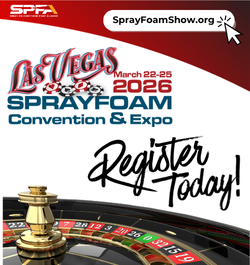
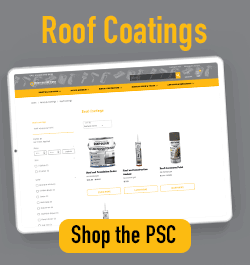
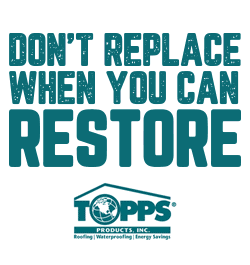




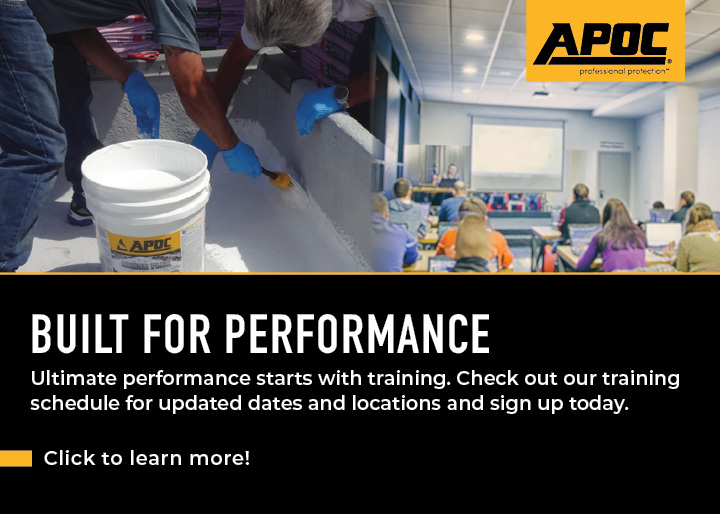

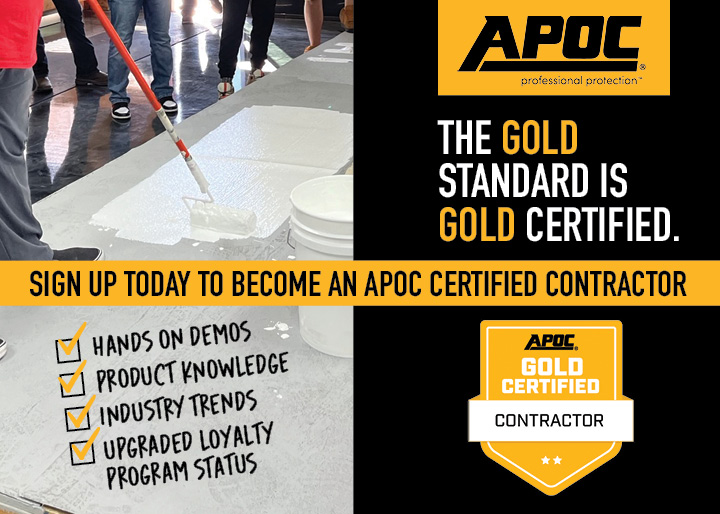



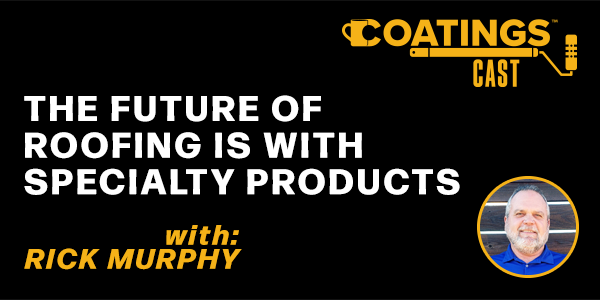
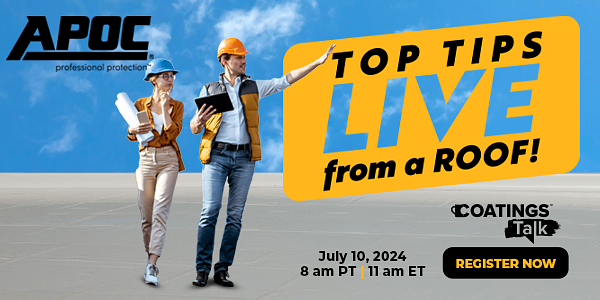


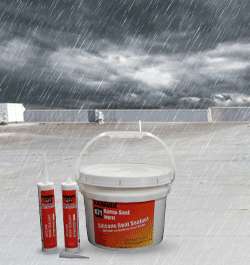



Comments
Leave a Reply
Have an account? Login to leave a comment!
Sign In